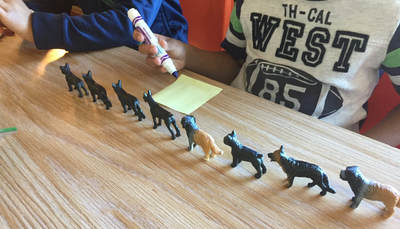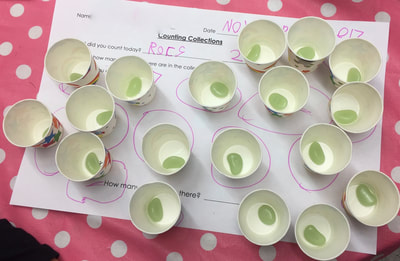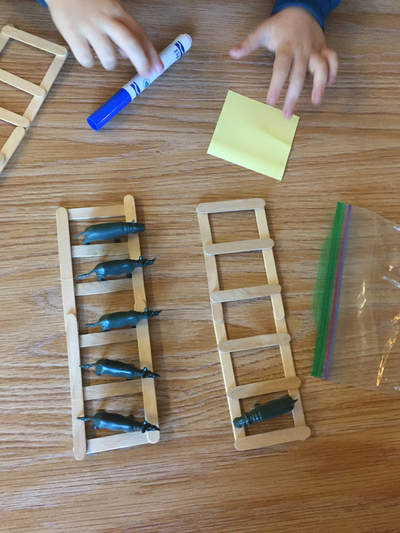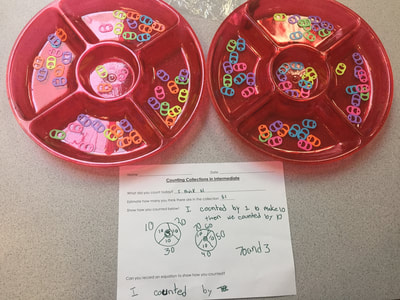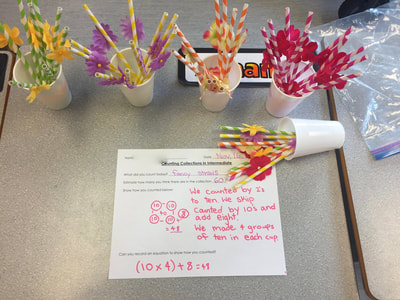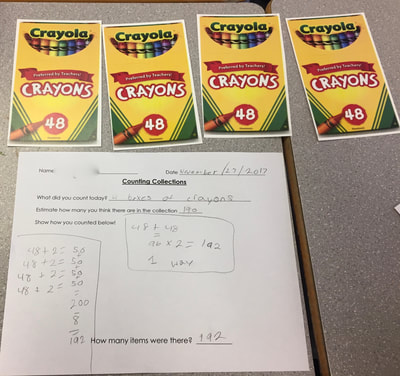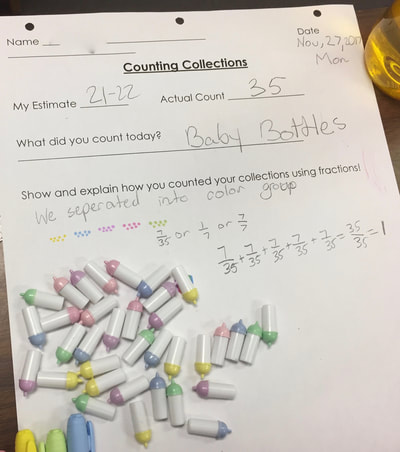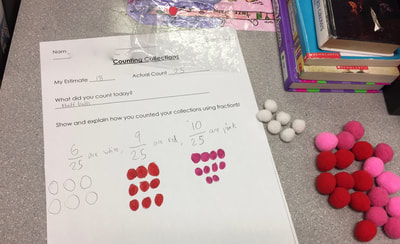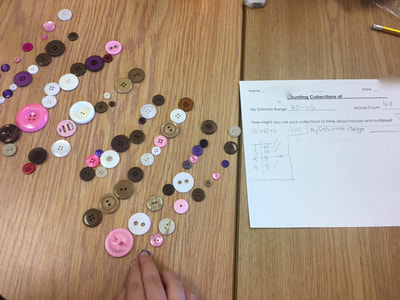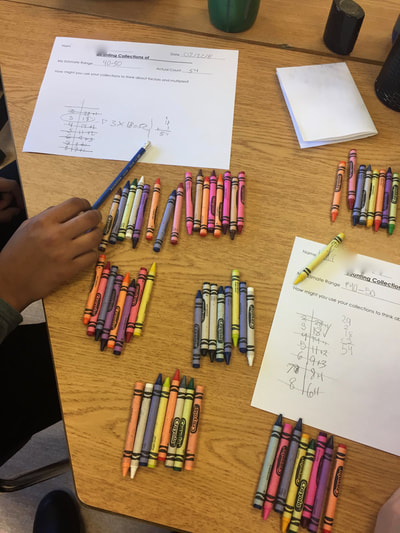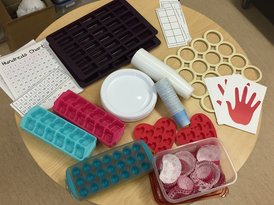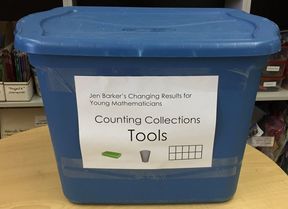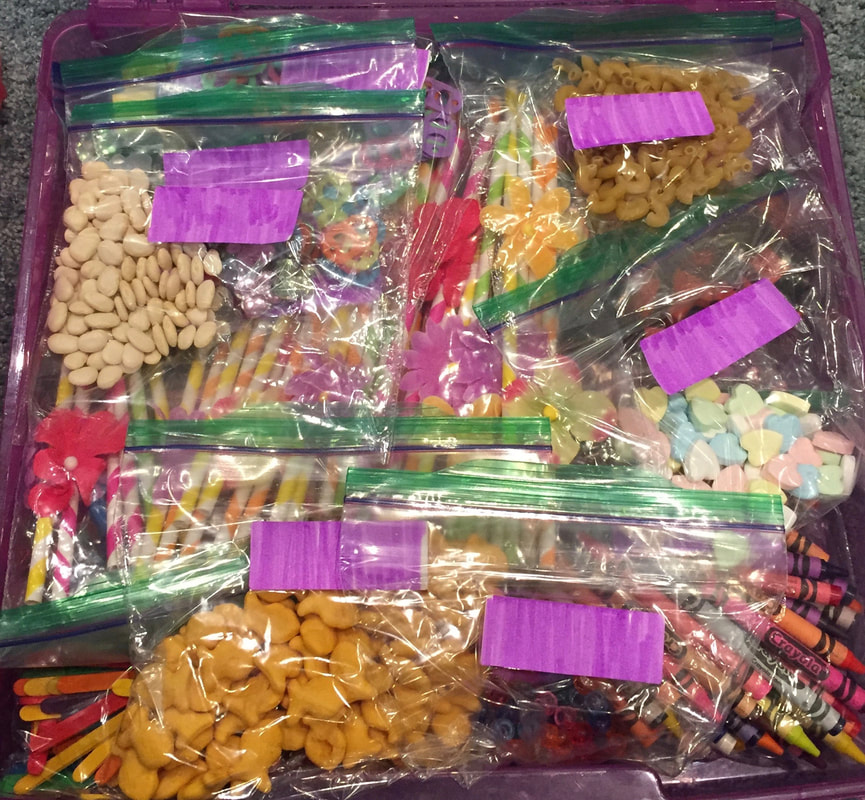What are Counting Collections?
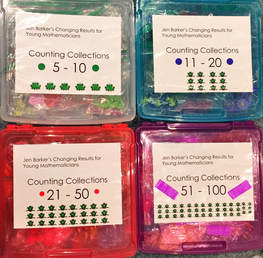
Counting Collections are just as described; they are collections of items that students count. Depending on your students, you will need several different kits (see image to the left). Kits hold several different collections of items.
Here are some links to previous blogposts I wrote on the importance including Counting Collections as a routine in your classroom. Below you will find some of the key resources I mention in the post. Additionally, I explain further about Counting Collections in my Number Routines Presentation which can be found on the Ideas page.
Here are some links to previous blogposts I wrote on the importance including Counting Collections as a routine in your classroom. Below you will find some of the key resources I mention in the post. Additionally, I explain further about Counting Collections in my Number Routines Presentation which can be found on the Ideas page.
What is the learning?
Depending on the student, the size of the collection, and how the student approaches counting the collection, all of the following concepts could be developed.
- one-to-one correspondence
- cardinality - knowing the last number stated when counting represents the total
- stable order
- conservation - knowing the total number does not change if the collection is counting in a different way
- subitizing
- estimating
- place value (e.g., teens as ten and some more, 2-digit numbers as groups of tens and ones, etc.)
- connecting a count to a numeral
- skip counting
- multiplicative thinking (e.g., I have five groups of seven and three more)
- division (and how this is related to multiplication)
- flexible counting strategies
- fractions and decimals
- factors and multiples - which can lead to discussions about prime and composite numbers
Guiding questions:
- How did you count? How many do you have in all?
- Can you count your collection another way? If you counted another way, how many do you think you will have? This question will assist you in seeing whether a student might have understanding of the concept of conservation. Conservation is an understanding that regardless of how you count a quantity (e.g., by 2's or 5's) the total quantity remains the same.
- Can you record an equation to describe how you counted?
- If you didn’t group your items by ten, how many groups of ten are in your collection? How many leftovers? Or if you had to represent your number with ten frames or base 10 blocks, how many ten frames/base 10 rods would you need? How many ones?
- What benchmark number is your collection closest to?
- Similar to the “Tell Me Everything” routine, what can you tell me about your number? (e.g., it is odd, it is a multiple of…)
- How many more would you need to make 200? 500? Or 1000?
Recording Templates
Primary Recording Template
| counting_collections_recording_template.pdf | |
| File Size: | 39 kb |
| File Type: | |
Intermediate Recording Template
| counting_collections_intermediate.pdf | |
| File Size: | 32 kb |
| File Type: | |
Template focused on counting in groups and the connection to Multiplication - Many thanks to Dana Shiels for sharing this.
| counting_collections_with_multiplication.docx | |
| File Size: | 45 kb |
| File Type: | docx |
Template focused on Fractions
| counting_collections_fractions.docx | |
| File Size: | 44 kb |
| File Type: | docx |
Template focused on Factors and Multiples
| counting_collections_factos_and_multiples.pdf | |
| File Size: | 22 kb |
| File Type: | |
Images of sets/packages of items: You could print multiple copies of the image and place these in a ziploc bag or you could print one copy of the image and using Sharpie write how many sets they are to 'pretend' to count. This is a great way to extend students' thinking as they need to decomposing and recompose quantities without being able to concretely move the items.
| counting_collections_images_of_sets.pdf | |
| File Size: | 20008 kb |
| File Type: | |
What will I need?
Some of you who have visited this page in the past, may have noticed that I have removed the Counting Collections number labels. A colleague of mine asked why I had labels on each collection. When I explained that I used them to help keep the kits organized, I started to wonder if there might be a better way. I questioned "Was I robbing students of determining the range themselves?" and determined I likely was. So I swapped out all the bags and place the collections in new bags that are colour code. The colours help me to keep the kits organized but don't take any mathematical thinking away from our young mathematicians.
|
You need various TOOLS that the students can use to organize and count. Some examples include:
|
|
You'll also need different KITS with various items in specific ranges of quantities so that you are inclusive and able to meet students where they are at. Depending on your students you may wish to have the following collection kits:
|
| red_hand_for_counting_collections.pdf | |
| File Size: | 18 kb |
| File Type: | |
| fiveten-frame-back-to-back.pdf | |
| File Size: | 229 kb |
| File Type: | |
| ten_and_some_more.pdf | |
| File Size: | 27 kb |
| File Type: | |
| 1 - 30 Charts.pdf | |
| File Size: | 235 kb |
| File Type: | |
| mini_hundreds_frames.pdf | |
| File Size: | 72 kb |
| File Type: | |
| counting_collections_images_of_sets.pdf | |
| File Size: | 20008 kb |
| File Type: | |
Counting Collections in Grades 3 - 7 Powerpoint
| counting_collections_grades_3_to_7.pdf | |
| File Size: | 9658 kb |
| File Type: | |
Supporting website/blogs/videos:
The best place to learn more about Counting Collections is on the Tedd.org site. There are amazing videos that show real classrooms using Counting Collections at different grades, as well as informational sheets. You will need to register with your email but they will not send you spam.
The Teaching Channel also has some fantastic video of classes engaging with Counting Collections.
Janice Novakowski, Richmond School District's Math Consultant has also blogged about her experiences using Collections.
The Teaching Channel also has some fantastic video of classes engaging with Counting Collections.
Janice Novakowski, Richmond School District's Math Consultant has also blogged about her experiences using Collections.
